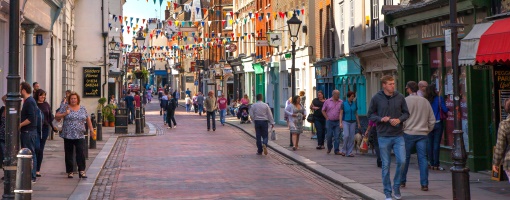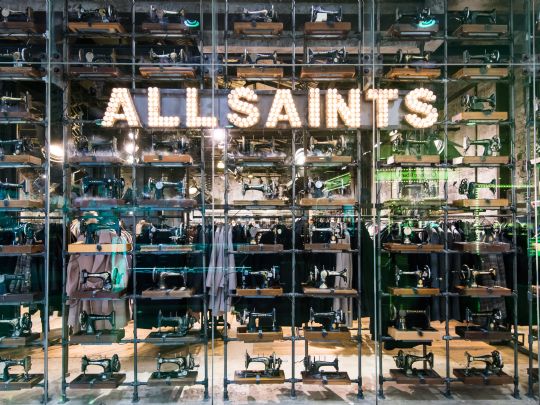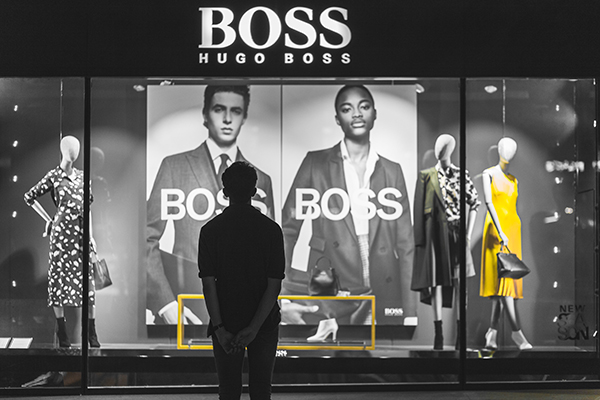The bad news: the recession has contributed to an increase in retail theft. The good news: there is continuous improvement in the technology solutions designed to aid retailers in the fight against crime. David Adams reports.
For as long as there have been shops, there have been thieves. And wherever there have been groups of shops or stalls gathered together to attract passing trade, there have been unscrupulous individuals happy to pass from one trader to the next, picking up what they fancy as they go without paying.
Modern shopping centres and malls have grappled with this age-old problem since they first began to appear more than a century ago. Yet despite the use of security guards, CCTV and various other security technologies, shoplifting still costs the retail sector billions of pounds each year and shopping centres are nearly as likely as the surrounding streets to be the site of violent crime. We have a few months to wait for the next British Retail Consortium (BRC) Crime Survey covering 2008/2009, but a rise in criminal activity is predicted, as one would expect during a recession.
One problem is that too many criminals regard CCTV installations more as an inconvenience than a deterrent. Analogue CCTV systems were too prone to breaking down, too easy to tamper with and often produced images that were too indistinct to use in court. Searching through hours of footage was often only felt to be justifiable in the event of a major incident, while integration with other security technologies - cameras automatically directed by a shop security alarm, for example - was often clunky and ineffective, if implemented at all. Yet the alternative, IP-based digital CCTV was regarded for a long time by retailers and shopping centres as an expensive way of obtaining poor quality images.
Today, all that has changed, as the cameras, bandwidth speeds, software and integration capabilities of IP-based systems have all improved hugely. These solutions can be integrated with business software like ERP platforms or with building management systems. They can be used as people counters, recording detailed footfall information relating to different parts of the centre at different times, or to provide accurate information about car park capacity. The solutions can also be accessed by staff using remote access technologies including handheld PDAs or smartphones. And image quality is now so good - it can be the equivalent to HD TV images - that it can be integrated with facial recognition technology.
"People have said TV is a fairly blunt instrument," notes Richard Paterson, business development manager at software specialist Hicom. "But if you do use it effectively it is extremely useful." It can be used to illustrate the modus operandi of a criminal, with an electronic image or video clip showing a criminal in action often a more effective training tool than a written description. Such images can be attached to information records about particular individuals and then, if the system is networked, passed to the retailers within a shopping centre, or to other shopping centres and retailers elsewhere in the country. A networked IP CCTV solution can also integrated with other IP-based security systems, like Electronic Article Surveillance (EAS) applications and other
technologies used by individual retailers in the centre.
Douglas Court shopping centre, in Cork, in the Republic of Ireland first installed an IP CCTV solution, supplied by Axis Communications, in 2007. The system offers almost 100 per cent coverage of the 13.55 acre site, including car parks, and is based on a 1GB fibre backbone and category 6 data network cabling. It incorporates people counting functions and also Automatic Number Plate Recognition (ANPR) cameras to help alert the centre if cars associated with particular individuals enter the car park.
One of the main motives for implementation of the system was to reduce the centre\\'s exposure to \\'slip and fall\\' claims for personal injuries: Ireland has seen a very large number of such claims in the last decade as courts have awarded substantial damages in many cases. The Shipton Group, which owns Douglas Court, combined use of the networked video solution with a comprehensive monitoring and cleaning process, with cleaning staff armed with electronic recorders that log when individual members of staff were present in specific areas. The solution has meant that a number of potentially very expensive false claims could be proved to be fraudulent.
The networked solution was used again when the Shipton Group renovated and rebuilt the Douglas Village shopping centre nearby. "Cameras were installed at the earliest opportunity during the first development phase and were instrumental in ensuring the safety and security of customers, staff and contractors," says Feargal Killoury, development manager at the Shipton Group. Even an overflow car park used by staff and contractors half a mile from the development was secured using a wireless link to the Axis solution\\'s network. For Killoury the most attractive quality of the solution is the ease with which it can be added to. "Once the fibre backbone was in place, adding or moving cameras or other IP devices was very straightforward and cost-effective," he says.
The Douglas Village solution is already integrated with alerts from the ANPR system as well as from building management and fire alarm systems. The company is currently considering further enhancements, including the use of audio equipment in some locations. There are plenty of other ways to use these technologies. Phil Doyle, UK and Ireland managing director at Axis Communications, says his company is working with other shopping centres to implement surveillance networks overlaid with analytic software that can identify some types of suspicious behaviour, such as individuals behaving strangely
next to vehicles in the car park. Analytical tools could also be used to monitor the behaviour of organised criminal gangs.
ANPR is already being used to reveal how long shoppers spend inside shopping centres by end users including the Shipton Group. It could also be integrated with marketing applications, enabling interaction with individual shoppers via electronic media or mobile phones as soon as their cars were identified entering the car park.
ANPR security functions could also include alerts being triggered by vehicles making repeated circuits of a specific location, or for \\'checking in\\' a vehicle for a given period in the shopping centre\\'s customer management database when a shopper arrives in the car park, with an alert triggered if it is moved before its owner checks out.
Integrated solutions can also help improve relationships between retailers, shopping centres and police forces. Doyle recalls a BRC event some years ago where he witnessed a major argument between representatives of a shopping centre, retailers in the centre and the police. "The retailers were saying the shopping centre security guards weren\\'t doing enough to protect their stores," he recalls. "(The security specialists) were saying that wasn\\'t what they were paid to do. There was also a problem in that information passed onto the police couldn\\'t be used as evidence because the images were not of high enough quality."
He contrasts this with a recent meeting with one of his colleagues and a representative of a police force who spoke at length about how useful it is now that his team and shopping centre security teams and retailers can all easily share the same high quality video evidence through a networked solution.
Security technology can also help shopping centres and retailers to help themselves. NBIS (the National Business Information System) was developed by Hicom Business Solutions following an initiative between the BRC and the Department for Trade & Industry (DTI) as was. It is designed to link town and city centres with shopping centres in business crime reduction partnerships, with data relating to crime and criminals shared between members and with other partnerships nationwide.
NBIS enables profiles of specific individuals to be accessed by partnerships across the country, enabling shopping centres to enforce exclusion orders against particular individuals. Hicom\\'s Paterson claims this has enabled shopping centres using the system to reduce crime, as well as helping them develop a better understanding of the risks to which they are exposed. It can also be used to spread information about retailers\\' staff sacked for criminal activity, helping to ensure they do not try to get a new job elsewhere in the same centre.
"The core business of a retailer and of a shopping centre is not policing, it\\'s to create an environment where people want to shop," says Paterson. "But
if shopping centres publicise that they use NBIS it can act as a deterrent. One thing professional criminals really hate is what they do being recorded."
"Intuitively one would say that crime would be increasing at the moment," he continues. "Looking across the NBIS data, actually, you could demonstrate an increase in crime in specific areas, but some partnerships can show a decline in crime over the last year. You can get into all sorts of debates about this, but what is definitely true is that you will always have a core group of criminals that will steal, in good times or bad. Persuading this group not to steal is very difficult, so if you cut off their options and bring them to the point where it\\'s more difficult for them to steal than to stop, that\\'s an effective measure."
Sadly, persuading a criminal to go and do what they want to do elsewhere is as ambitious as most shopping centres and retailers can ever afford to be. The good news is that technology designed to help them do so and to bring criminals to justice continues to improve every year.
Latest News
-
Currys upgrades payment technology to enable AI-powered shopping experiences
-
Waitrose pledges new ‘market leading’ welfare standards for charcuterie
-
Ocado ends tech exclusivity agreement in ‘most markets’
-
Asda announces new group CIO
-
What’s next for retail in 2026?
-
The most read Retail Systems stories of 2025
Beyond Channels: Redefining retail with Unified Commerce
This Retail Systems fireside chat with Nikki Baird, Vice President, Strategy & Product at Aptos will explore how unified commerce strategies enable retailers to tear down these barriers and unlock new levels of operational agility and customer satisfaction.
The future of self-checkout: Building a system that works for consumers and retailers
In this webinar, industry leaders discussed what the future of self-checkout looks like and how retailers can make the technology work for everyone.
© 2024 Perspective Publishing Privacy & Cookies










Recent Stories